Hairy Toad Lily (Tricyrtis hirta) is a unique perennial plant from the Liliaceae family, native to central and southern Japan. Known by other names such as Japanese Toad Lily or simply Toad Lily, it stands out for its orchid-like blooms that add charm to late-summer and fall gardens.
This species thrives as a perennial and is cherished for its striking, star-shaped flowers that resemble a delicate blend of orchids and lilies. Beyond its visual appeal, the plant is associated with an old tale suggesting its sap was once used by indigenous people to attract and catch frogs, giving rise to its whimsical common name.
With its late-season blooms and fascinating backstory, the Hairy Toad Lily is a captivating choice for gardeners seeking to extend color and interest into the cooler months.
| Common name | Hairy Toad Lily, Japanese Toad Lily, Toad Lily |
| Botanical name | Tricyrtis hirta |
| Family | Liliaceae |
| Species | hirta |
| Origin | Central & S. Japan |
| Life cycle | Perennial |
| Plant type | Herbaceous Perennial |
| Hardiness zone | 4, 5, 6, 7, 8 |
| Sunlight | Deep shade |
| Maintenance | Medium |
| Soil condition | High Organic Matter |
| Soil ph | Acid |
| Drainage | Well-Drained |
| Growth rate | Slow |
| Spacing | 3 ft. – 6 ft. |
| Harvest time | Fall |
| Flowering period | Fall |
| Flower color | Lavender, Purple |
| Leaf color | Green |
| Stem color | Green |
| Fruit type | Capsule |
| Garden style | Asian Garden |
| Uses | Container |
I. Appearance and Characteristics
Tricyrtis hirta (ほととぎすそう, Hototogisu-sou), the toad lily or hairy toad lily, is a Japanese species of hardy herbaceous perennial plant in the lily family Liliaceae.
It is found growing on shaded rocky cliffs and stream banks in central and southern Japan.
This perennial, hardy in Zones 5-9, has speckled flowers, and the plants have graceful arching habits and often variegated or spotted foliage to accompany the dainty blooms. The flowers usually come in whites, yellows, purples, or soft pinks. Many variegated varieties of toad lily feature gold foliage with speckles or edges of another color.
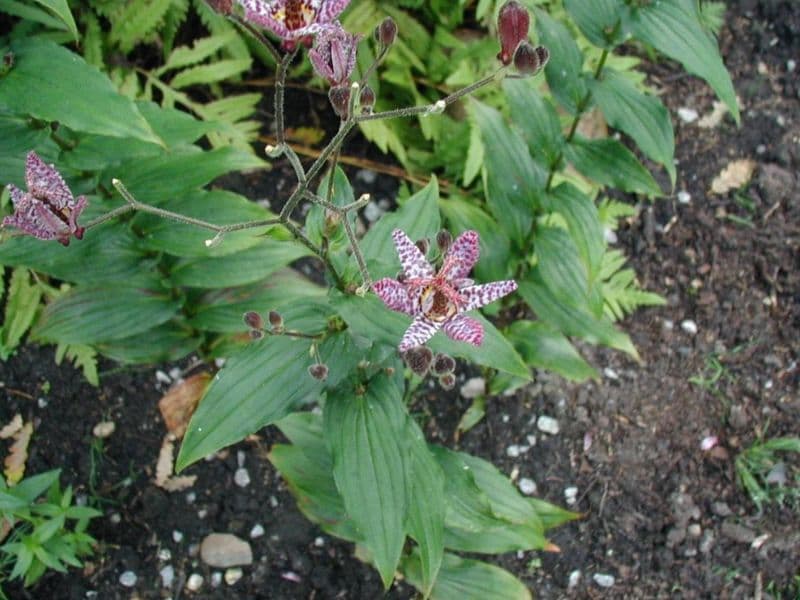
Toad lilies are still a relatively recent introduction to the U.S. garden world. These plants came from east Asia and weren’t used in ornamental gardens until the mid-’90s when they became available at specialty nurseries. Since then, new hybrids and cultivars have been created that feature larger blooms, unique patterns, and exciting foliage colors.
II. Types of Toad Lily
You’ll find many cultivars and hybrids of Tricyrtis hirta.
- ‘Golden Gleam’: Shorter plant with gray-spotted chartreuse and golden leaves with dark purple and white speckled blooms
- ‘Lightning Strike’: Leaves with green streaks and pale lavender blooms
- ‘Miyazaki’: Grows a profusion of shorter purple and white speckled flowers and its cousin ‘Miyazaki Gold’ grows shorter at 12 inches tall
- ‘Moonlight’: Chartreuse leaves with unique purple-speckled white flowers and inside rings of purple
- ‘Sinonome’: A hybrid with clusters of purple and white speckled blooms
- ‘Tojen’: A hybrid producing white flowers with lavender margins and unspotted inner sepals sitting on burgundy stems
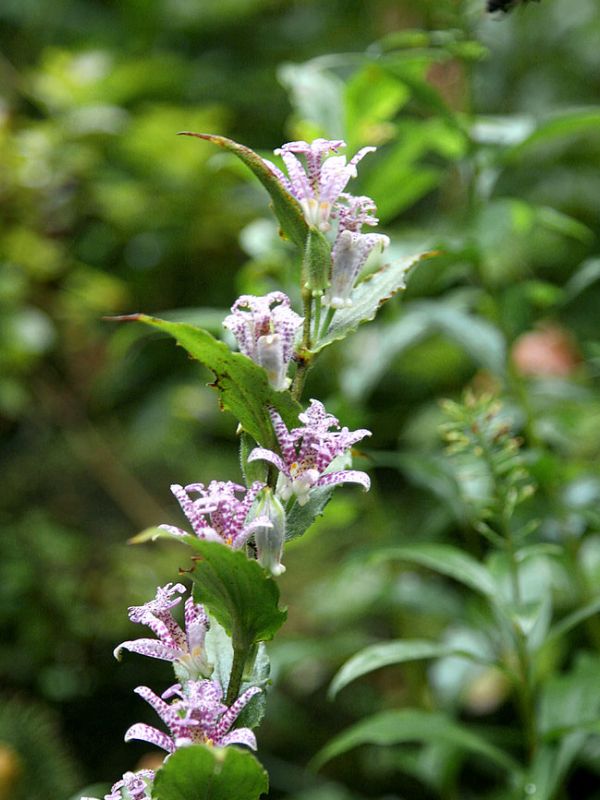
III. How to Grow and Care
Sunlight
These plants love morning sun and afternoon shade, but dappled shade throughout the day works just as well. A few varieties may be able to take full sun, but only if well-watered. Even then, foliage may scorch. In the too-dense shade, variegated and gold varieties may fade to more green color, and blooms may be less numerous.
Temperature and Humidity
These plants can be grown almost anywhere in USDA hardiness zones 4 to 9. They can withstand very cold temperatures and can be grown in areas with hotter temperatures when given full shade. They do well with moderate humidity levels. Too much moisture can cause rot, while too little can cause browning foliage.
Watering
Toad lilies like consistent moisture, and therefore require consistent watering. Do not allow the soil to dry out. Water as frequently as needed to keep the soil evenly moist without making it soggy. This will depend on your location and rainfall, but these flowers may need to be watered multiple times a week.
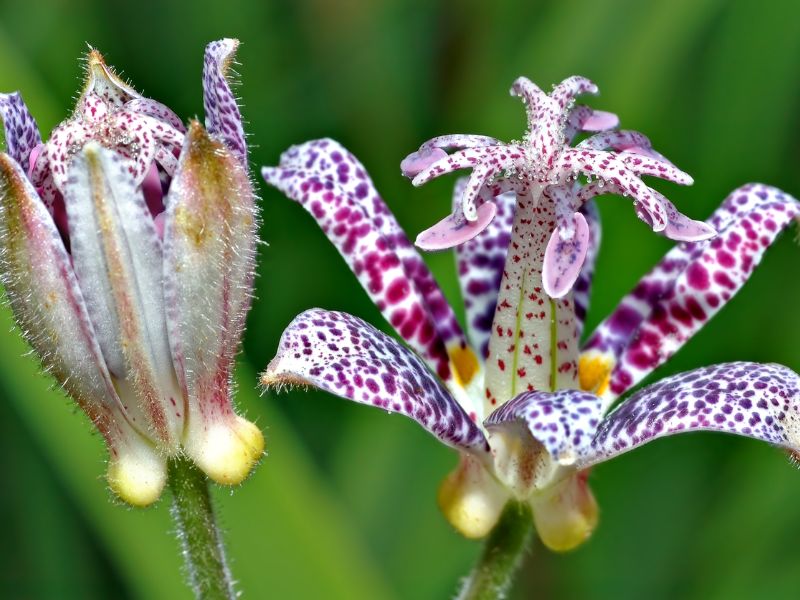
Soil
Fertile, moist, and organically rich soil is perfect for these flowers. They prefer loamy, well-draining soil with consistent moisture and a slightly acidic pH level. Adding a generous amount of compost or other organic material to the soil will keep these plants very happy. When the soil is kept consistently moist, toad lilies will grow taller than in dry soil conditions.
Fertilizing
Toad lilies like nutrient-rich soil. Therefore, giving these flowers fertilizer each spring will ensure healthy growth habits. Use a well-balanced liquid fertilizer at half-strength. Adding generous amounts of compost works great as well. This option also helps the soil retain a balanced amount of moisture without becoming soggy.
Planting Instructions
These plants are native to the edges of woodlands and around creeks, so plant them in similar environments. They do best when mostly in the shade, especially where it’s hot.
Plant toad lilies in the spring for fall blooming. Mix compost with soil and make a hole twice as big as the rhizome. Spread the roots and fill in with the soil. Water until top 1 to 2 inches of soil is saturated.
Propagation
Toad lilies are best propagated through division and cuttings. Division can be done in early spring, while cuttings can be taken in early summer.
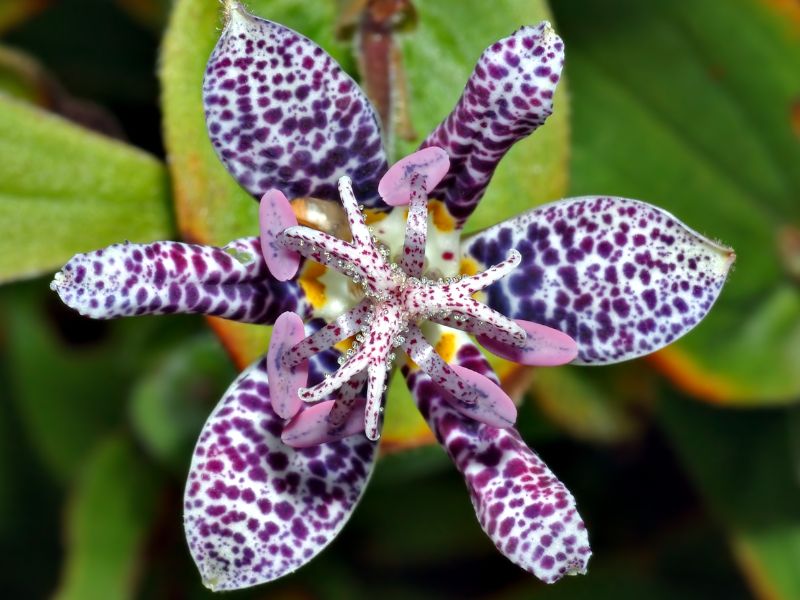
To divide these plants, you will need a pair of garden gloves, a shovel, and a pair of sanitized garden snips. Then follow these instructions:
- In the early spring, use the shovel to dig a circle around the plant, slowly loosening the root system.
- Once the plant can be lifted from the ground, use the shovel and snips to divide the root system into multiple sections. Be sure each section has healthy roots and foliage if present.
- Plant each section in its own spot, amending the soil with plenty of compost before planting.
To propagate through cuttings, you will need a pair of garden gloves, a pair of snips, a small pot, rooting hormone, and well-draining, rich, moist soil.
- In early summer before flower buds appear, snip a cutting that is around 4 to 6 inches long. Be sure the cutting has healthy leaves on it.
- Dip the cut end into rooting hormone.
- Gently bury the cut end into the moistened, rich soil.
- Place the cutting in an area that receives bright, indirect light and keep the soil moist.
- Check in a few weeks for root growth by gently tugging the cutting. Resistance means roots have formed.
How to Grow From Seed
Toad lilies can also easily be grown by seed. They can be started indoors or by directly sowing them into the garden. Either method you choose, it is important not to bury these seeds, as they require light to germinate. The seeds also must be used fresh, not dried and stored.
To start outdoors, follow these instructions:
- In the early spring or late fall, scatter fresh seeds in the garden. The cold experienced through winter or early spring will naturally stratify the seeds.
- Keep the soil moist and watch for little seedlings. They should appear in the late spring as temperatures warm up.
To start seeds indoors, follow these instructions:
- Place fresh seeds in the refrigerator in a plastic bag for about one month. This will simulate winter, as the seeds require cold stratification before germinating.
- Remove the seeds after one month and lightly sow them on top of moist, rich soil.
- Place the seeds in an area with bright, indirect lighting and keep the soil moist. Germination should occur in 4 to 6 weeks.
Potting and Repotting
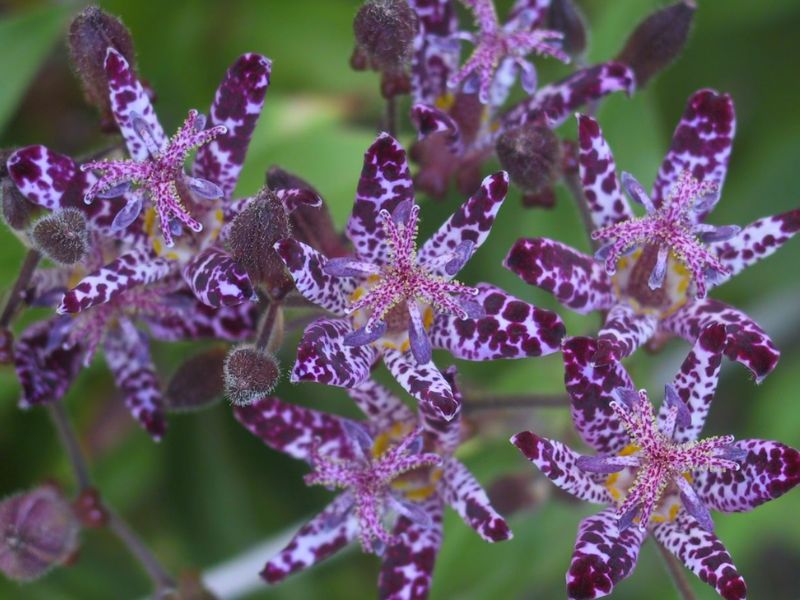
Toad lilies can be grown in containers, as long as the soil is kept moist. Because these plants do not have access to underground water sources, they will need to be watered more often. Choose a pot with good drainage holes to prevent standing water. You should also pay attention to container material; a glazed ceramic pot or plastic pot is ideal for holding moisture but terracotta can whisk away moisture too quickly.
If the toad lily outgrows its container, you can either repot or divide the plant. To repot, simply tip the container on its side and tap it until the root system is loose and can be slid out of the pot. Fill a pot at least 1 inch larger with rich, moist soil, and plant the toad lily into its new container.
How to Get to Bloom
Toad lilies produce small, white to light purple blooms covered in iconic, vibrant purple spots. The flowers appear in the late summer to early fall. Each bloom is only about 2 inches in size and has six petals. They form on the nodes of long, arching stems that can reach up to 36 inches in length. Their arching shape and unique, exotic blooms often draw comparisons to orchids.
To encourage abundant blooming, be sure to give these plants plenty of compost or organic material and keep the soil moist. Make sure they do not receive too much sunshine, especially in warm climates. These flowers do not require any deadheading.
Pests and Diseases
Common Pests and Plant Diseases
Toad lilies are not overly susceptible to pests or diseases. However, slugs in the garden may cause damage by eating the foliage of these plants. Anthracnose can pose problems for toad lilies but look for newer cultivars or hybrids, such as ‘Sinonome’ and ‘Tojen’, both of which are reportedly resistant to this fungal disease.
Common Problems
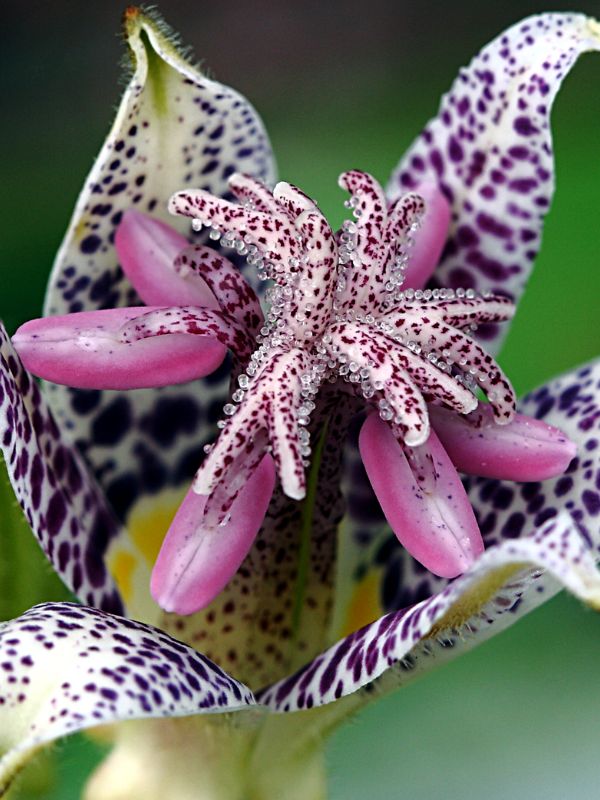
These hardy plants are not prone to problems as long as they are provided with adequate amounts of shade and moisture. However, even hardy plants can sometimes run into problems. Foliage problems can occur and be an indication of moisture management issues. Watch for this sign.
Brown Spotted or Tipped Leaves
Brown spots or edging on foliage is a sign of too little water. These plants require consistent moisture levels to stay healthy. If you notice any brown spots forming, be sure to give these plants more water. Water frequently, and do not allow the soil to dry out. At the same time, be sure to avoid soggy soil, as this can lead to rot.
Orange Spotted Leaves
Anthracnose may cause leaves to develop small orange spots. Prevention measures include watering only the base of the plant, not the leaves, and ridding the area from gardening and other debris to give plants better air circulation.
III. Uses and Benefits
Toad lily has several lovely cultivars that provide a plethora of different shades and shapes for gardens. Each member of this species works well in informal or pollinator gardens since they attract bees and other pollinators. You can plant them alongside other showy flowers in beds, or use them as borders along scenic paths.
Find Where to Buy the Best Japanese Toad Lily (Tricyrtis hirta)

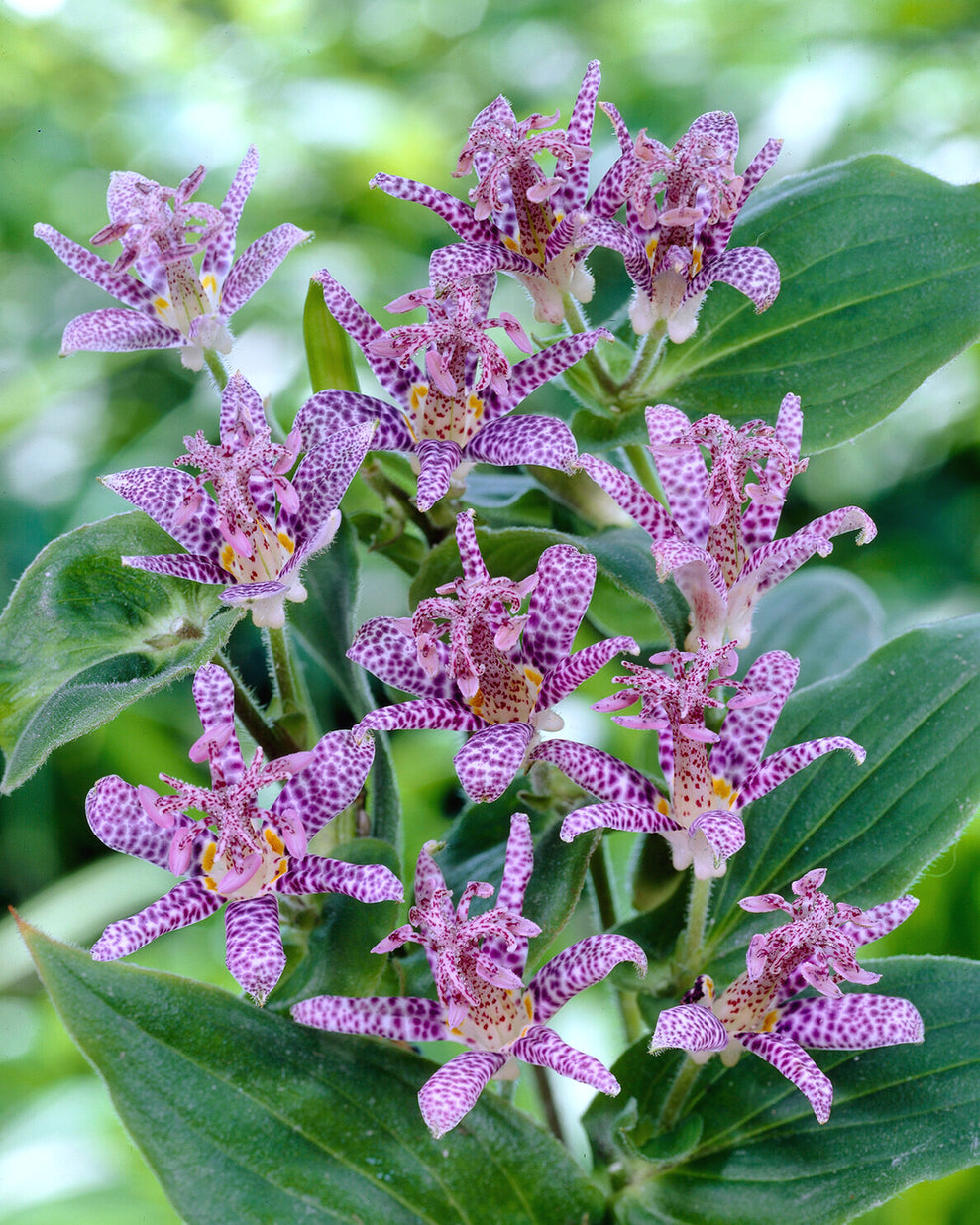



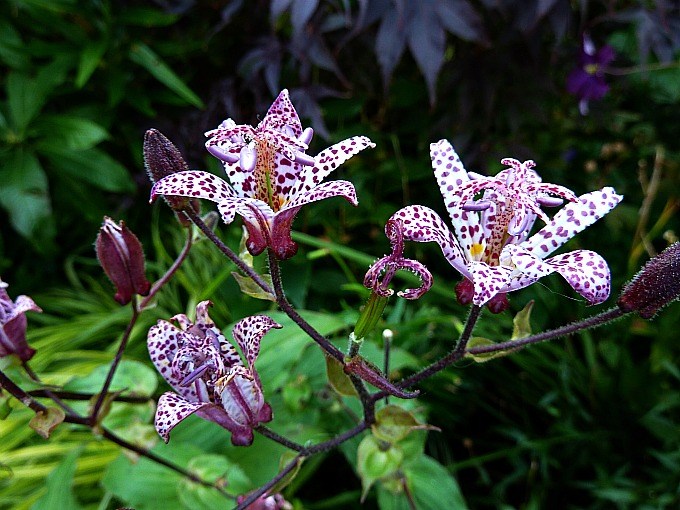

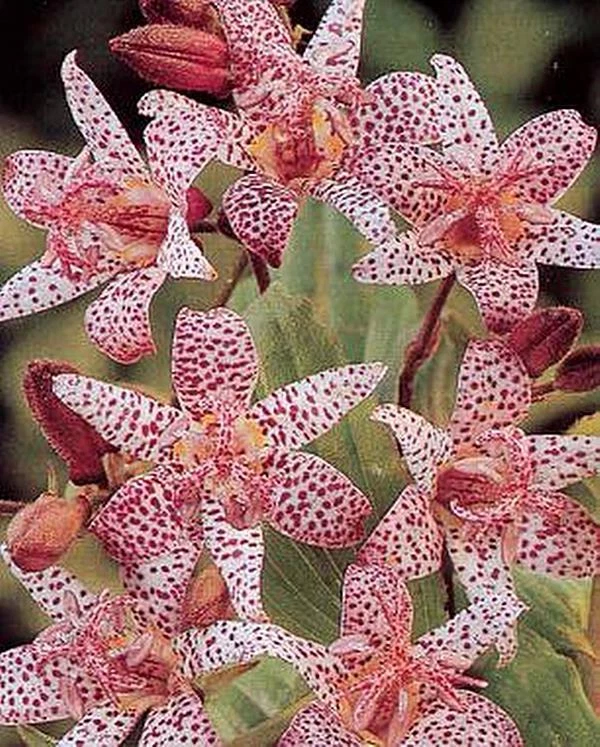


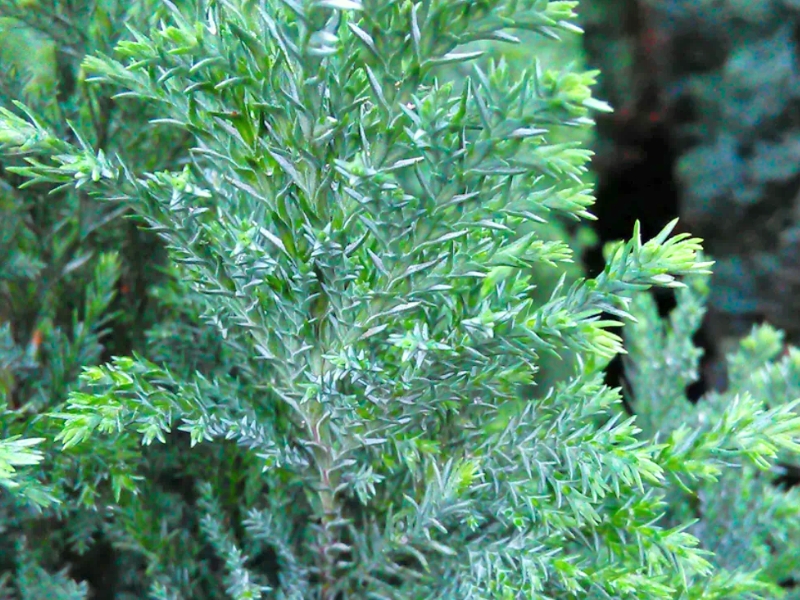
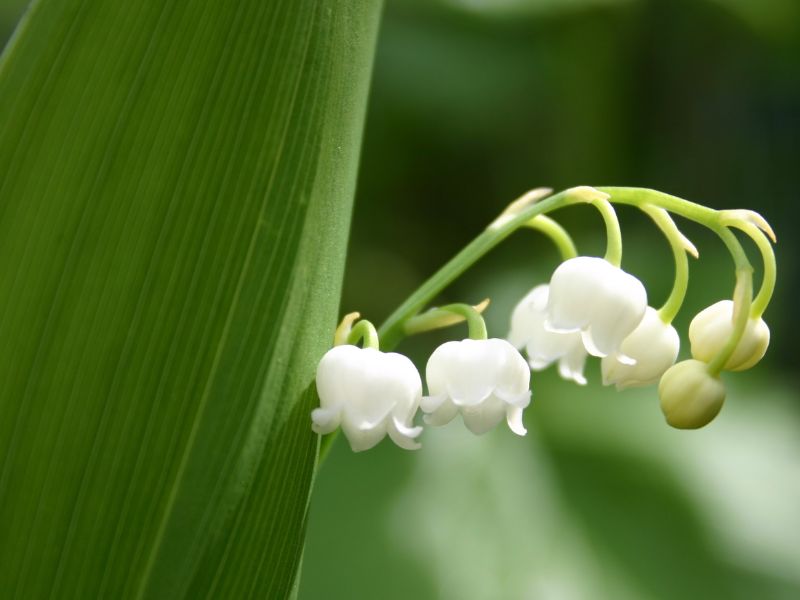
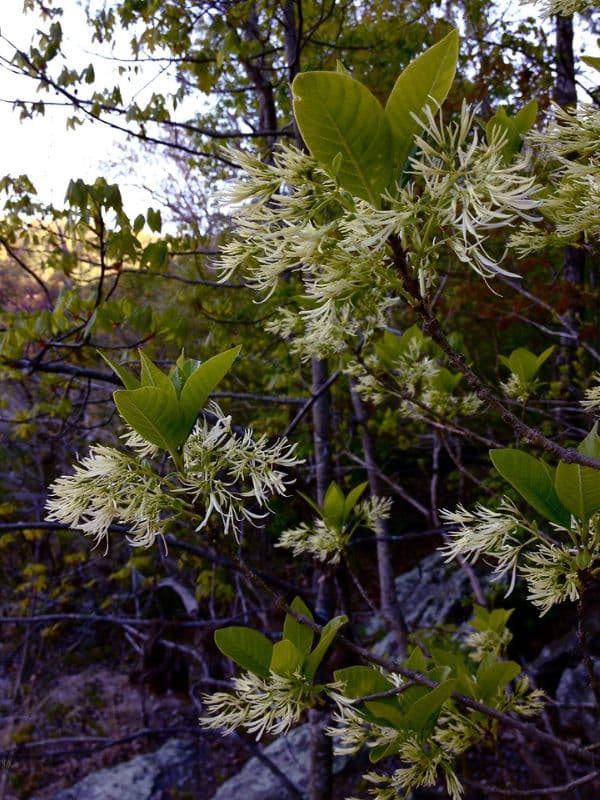
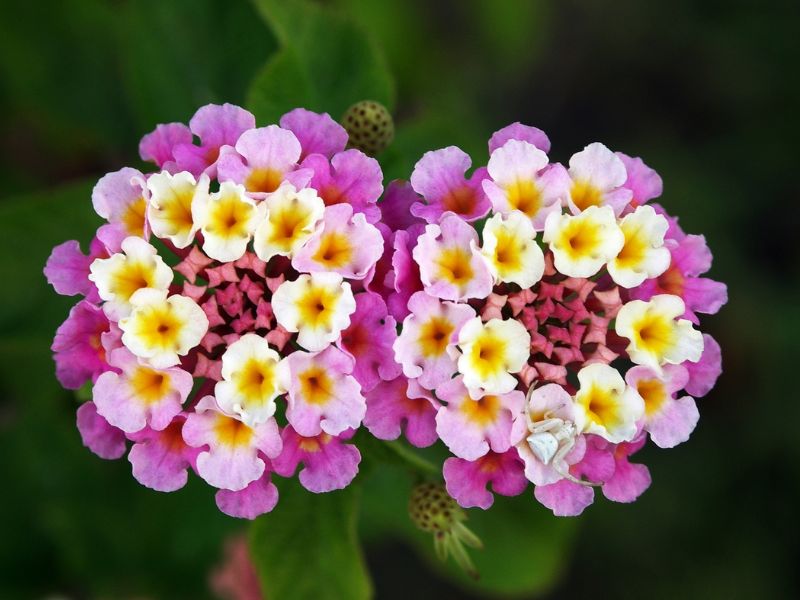
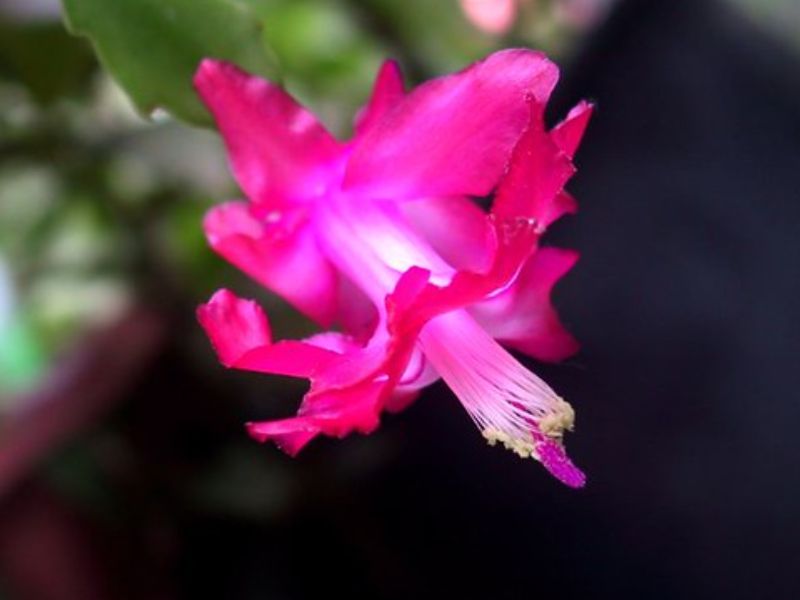
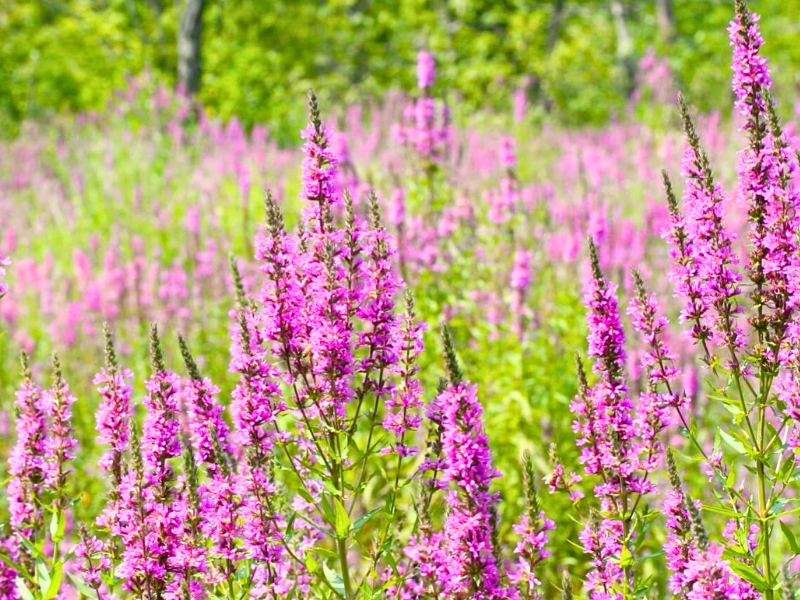
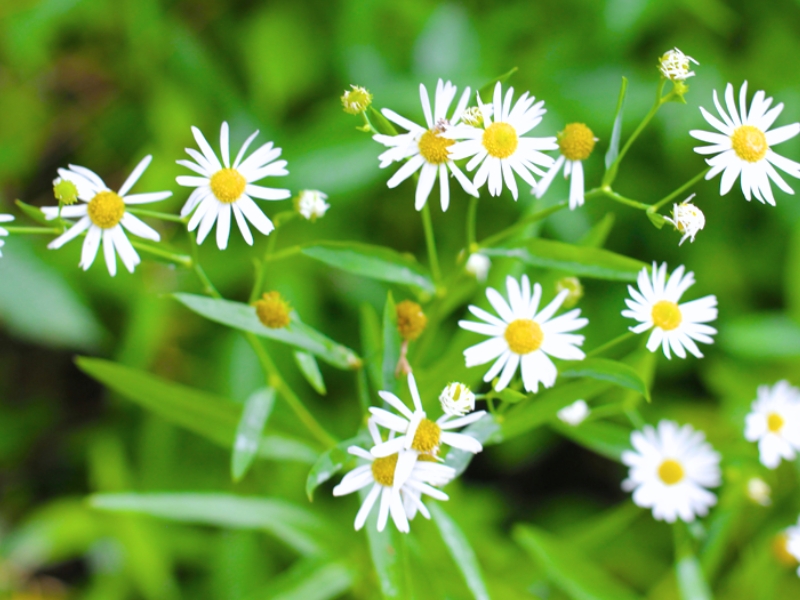
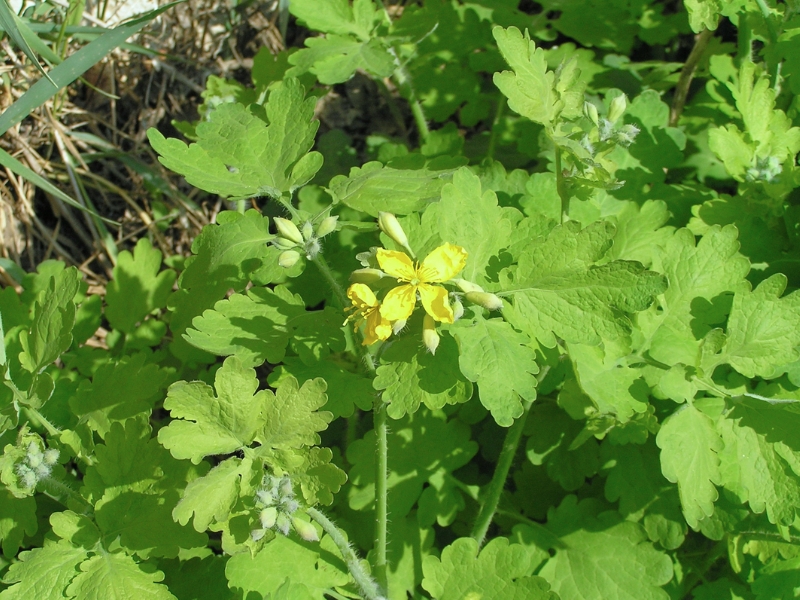
Leave a Reply